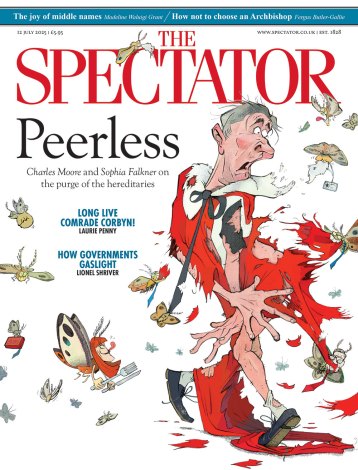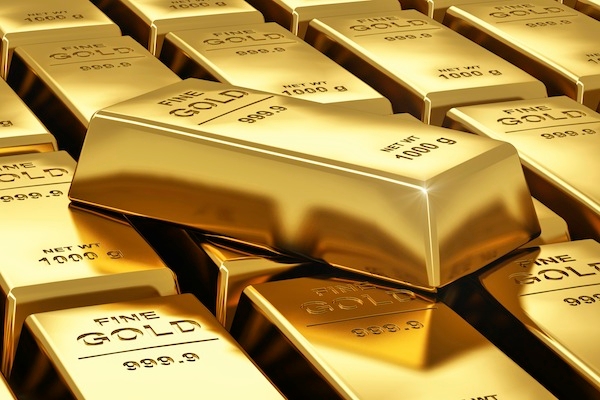Few assets are more misunderstood than gold. I might even refine that statement — if you’ll pardon the pun — and say that few assets are more misunderstood than money. Gold happens to be both. Technically, of course, we are constrained by government edict to use pounds sterling for the payment of our taxes and debts. My take on this dismal state of affairs, but also my optimism, can best be summarised in the title of Nathan Lewis’s recent book, Gold: The Once and Future Money.
Economists give money three attributes. It should be a unit of account (we can price things in it). It should be a medium of exchange — which avoids the inconvenience of barter. And it should be a store of value, something which enables us to maintain our purchasing power in real terms if we choose to defer spending and save instead. Our current ‘fiat’ paper money does a passable job of the first two, but is disastrous in relation to the third. To put it another way, since the 1913 establishment of the US Federal Reserve, which acts as America’s central bank, the US dollar has lost 98 per cent of its purchasing power. Over the same period, sterling has done even worse.
The likes of gold and silver developed as money in a free market. They were in competition with all kinds of other ‘monies’ such as cattle, shells, nails, tobacco and cotton; and they won. People tended over time to favour the precious metals as money because of their scarcity, durability, malleability, and beauty. Using paper certificates to represent reserved gold was a logical next step. But then the rot set in, when greedy bankers realised that they could print certificates for more physical gold than they actually possessed. Nothing really ever changes. The reason that heavily indebted governments and central banks have such a love-hate relationship with gold today is that a rising gold price signifies a growing suspicion by investors of the paper currency that governments are determined to print in ever more absurd quantities. And yet the world’s central banks have continued to build their gold reserves over recent years despite consistently higher prices. Cyprus, for reasons of urgent necessity, is a rare seller.
Goldbugs — those of us who believe that gold is a better store of value than unbacked paper currency — tend to see 1971 as ‘Year Zero’, because that is when President Nixon took the US dollar ‘off gold’. In severing the last link between paper money and the precious metal that had previously backed it, Nixon ushered in a 40-year experiment in money. A meaningful part of that experiment allowed the world’s central and commercial banks effectively unlimited powers of credit creation: if your printing of money is no longer constrained by finite bullion, you can print, and borrow, as much as you like. Now that a heavily indebted West has gone conclusively ex-growth, central banks are making the most of that privilege. Those of us nursing any exposure to paper money are paying the price. Every day of additional quantitative easing makes today’s pounds (or dollars, or Japanese yen) worth less tomorrow.
But when the price of gold fell below $1,400 an ounce last month from its earlier high of over $1,900 in 2011, commentators rushed to claim that the gold bull market was over. Well, perhaps. More likely, it simply reflects the fact that if investors and traders choose to dump 400 tonnes of gold into the market at one go, the equivalent of 15 per cent of annual gold mine production — as they did in mid-April — it causes indigestion and the price falls. At this point, it’s also worth pointing out that not all investors in gold are created equal. Some of them are purely speculators — they chase the price up, and they’re happy to sell short when the price goes down. They have no interest in taking possession of the physical asset and are content to play games on computer screens and futures exchanges. Could the same people that brought you Libor-fixing be guilty of manipulating the gold price? Do bears shed ballast in the woods?
But some of us are buying and holding gold for entirely different reasons. Not as a form of speculation, but entirely the opposite. In the words of the management consultant Andreas Acavalos, the decision to buy gold is not an investment. Instead, ‘It is a conscious decision to refrain from investing until an honest monetary regime makes rational calculation of relative asset prices possible.’ Will we ever see an honest monetary regime? That depends in part on how long the present grotesque fraud on savers lasts. I am not hopeful that we live in the most stable of banking or financial environments, which is why I put a premium on -bullion.
Last month’s savaging of the gold price no doubt put the fear of God into recent buyers. It certainly triggered floods of uninformed commentary by the Twitterati. (We’ll know that our culture has improved when goldbugs are no longer being permanently digitally assaulted by the paperbugs who are their polar opposites, and who fail to grasp the principles of sound, honest money.) The reality is that investors have no idea where gold will be trading in dollar terms a day, a week, a month or a year from now. But unless and until politicians suddenly get religion and start running balanced budgets, or unless our central bankers suddenly stop printing money even as it goes out of fashion, it is entirely plausible to believe that the rally in gold has merely been temporarily halted. We know that central banks have been busily accumulating the stuff throughout the duration of our financial crisis. Are they doing that simply because they have a penchant for bling?
For those of us charged with shepherding the sacred assets of our clients through a period of unprecedented monetary debauchery, gold represents a flight away from dishonest money towards a haven that is scarce, independent and permanent. As my fellow investor Tony Deden of Edelweiss Holdings puts it, wherever the paper-money price of gold goes, before you decide to sell you should first decide why you own it.






Comments